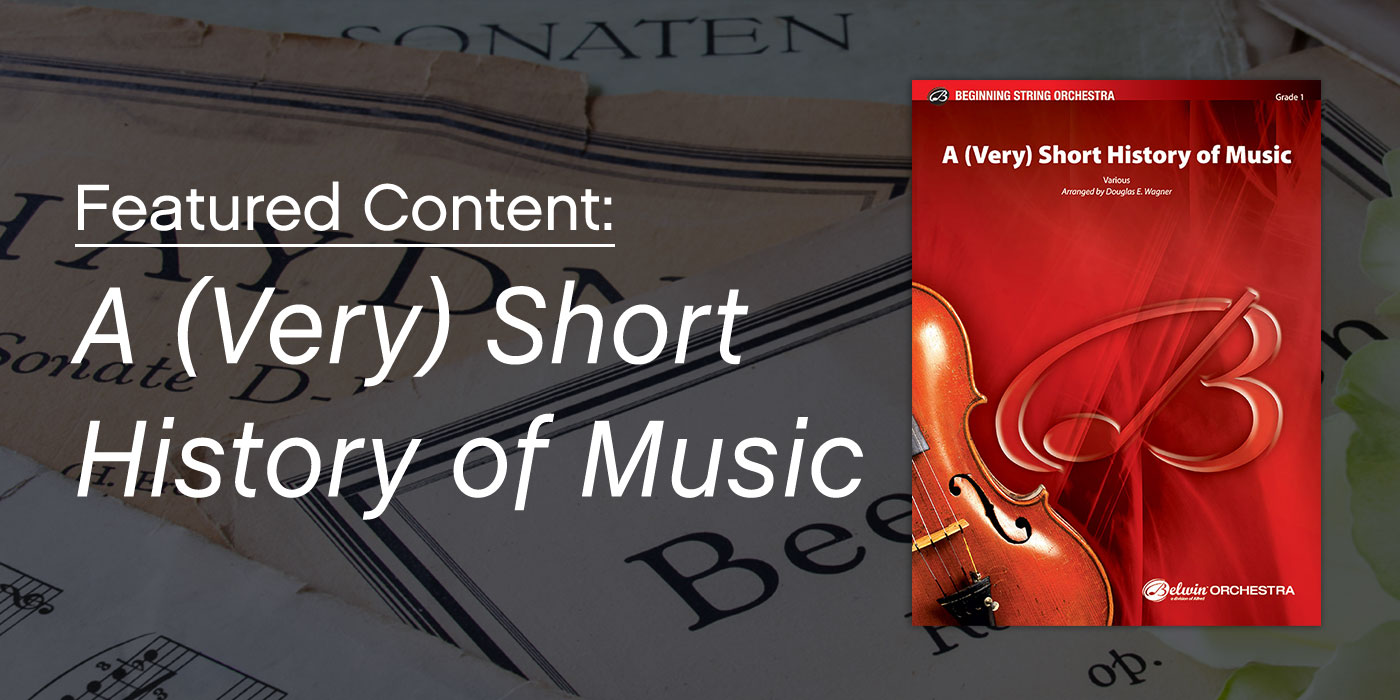
Today’s featured content is a string orchestra piece that will be performed at the Midwest Clinic this December. Created by Douglas E. Wagner, it presents a seamless medley made of seven themes, each representing one major period of Western musical history.
Best of all, it uses mostly half and quarter notes – because it’s a grade 1 piece!
With A (Very) Short History of Music, your students and audience members can experience ten centuries of music history in two and a half minutes. Take a look and listen:
Components of the Medley
The musical periods and examples included are, in order of appearance:
- Medieval – Gregorian Chant: “Dies Irae” from the Requiem Mass [m. 1]
- Renaissance – William Byrd: “The Bells” from the Fitzwilliam Virginal Book [m. 8]
- Baroque – Antonio Vivaldi: “Autumn” from The Four Seasons [m. 18]
- Classical – Franz Joseph Haydn: Symphony No. 94 “Surprise” (Mvt. II) [m. 24]
- Romantic – Ludwig van Beethoven: Symphony No. 9 “Choral” (Mvt. IV) [m. 32]
- Impressionist – Erik Satie: “Gymnopédie No. 1” [m. 40]
- Modern (Early 20th Century) – Igor Stravinsky: “Finale” from The Firebird ballet [m. 52]
Of course, A (Very) Short History of Music is in SmartMusic, and you can try SmartMusic at no charge, simply by creating an account.